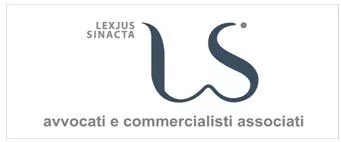Under pressure of several proposals, Italian Government has recently adopted some amendments to a series of measures, introduced with the laudable aim to contrast the economic and financial crisis and to reduce the Italian budget deficit.
The package of measures known as "Salva Italia" - that literally means "save" or "rescue" Italy - involves several sectors, including aviation by the issuing of a new tax for private aircraft and for chartered flights passengers.
With regard to the private aircraft, the tax is applied to the Italian-registered private aircraft and non-Italian registered aircraft (which spend more than 45 consecutive days in Italy) and calculated on the weight of the aircraft at the time of takeoff.
According to the last amendment, the tax is provided at rates up to 7.60 Euro per kg (it was previously scheduled up to 7.55 Euro) with a max take-off weight over 10 tons.
However, the taxation of aircraft on the basis of its weight has been proven to be a largely counterproductive measure, as demonstrated by a similar tax introduced - and subsequently removed - from the Prime Minister Giuliano Amato in 1992, which caused the exodus of aircraft to other countries.
With regard to the aerotaxi flights, defined as passengers' flights where the aircraft is chartered for its entire capacity on an exclusive basis, the tax is due for each passenger on each leg of the flight and paid by the carrier.
Introduced by the Government of Prime Minister Mario Monti, the charter flights passengers' tax originally provided for a minimum tax of 100 Euro per passenger for each flight to or from the Italian territory of less than 1.500 km.
In order to reduce the effects of these measures on the aviation sector, already strained by recession, the charter flights passengers' tax has been recently reduced to 10 Euro per passenger for flights of less than 100 km, in order to avoid penalizing short helicopter flights.
Otherwise, the tax has remained at Euro 100 per passenger for flights between 100 and 1500 km and Euro 200 per passenger for flights in excess of 1500 km.
The flight distance between the point of departure and the point of arrival is calculated with reference to the great circle route plus 95 km, regardless of technical stop-overs.
As far as the time of payment of the tax by the operator is concerned, it depends on the aircraft country of registration: for aircraft registered in Italy or any Member State of the EU or the European Economic Area (EEA - EU member States plus Iceland, Liechtenstein and Norway), payment is due by the operator before the end of the month following the one when the flight took place. For aircraft registered in other countries different from European Union and EEA, the tax is payable, for each flight, prior to departure from the Italian territory or within the day following the date of arrival on the Italian territory.
Furthermore, it is also worth noting that the current configuration is unreasonable in relation to the cases of exemptions where it does not provide for an exclusion from tax of the activities of helicopter rescue, civil protection, fire fighting and, more generally, all those public service activities/social protection and safety of citizens, territory and environment, although these activities are, however, already excluded by the decree "Salva Italia" in relation to the tax on private aircraft.
The content of this article is intended to provide a general guide to the subject matter. Specialist advice should be sought about your specific circumstances.



